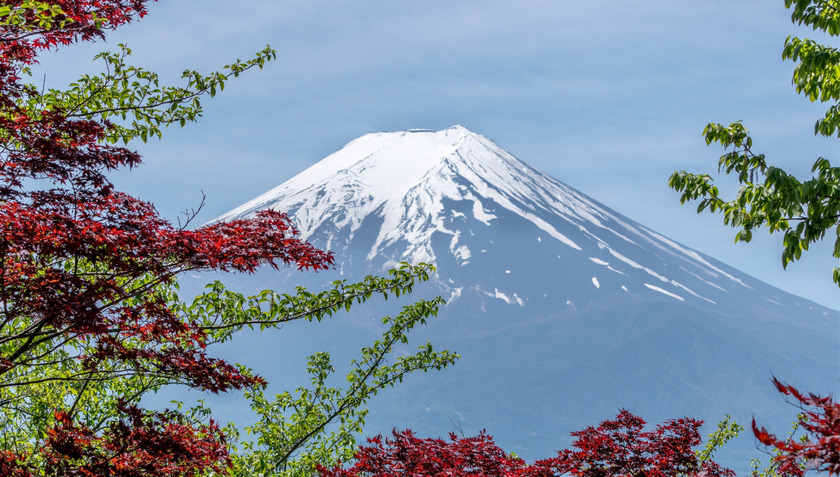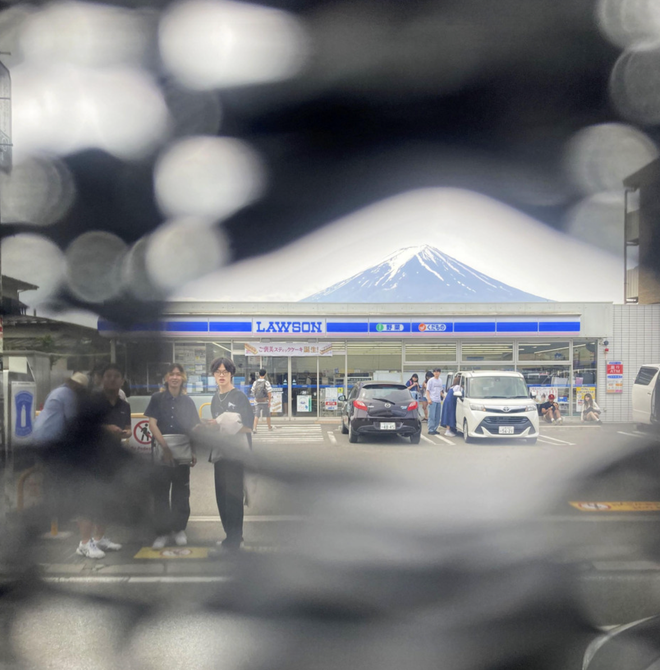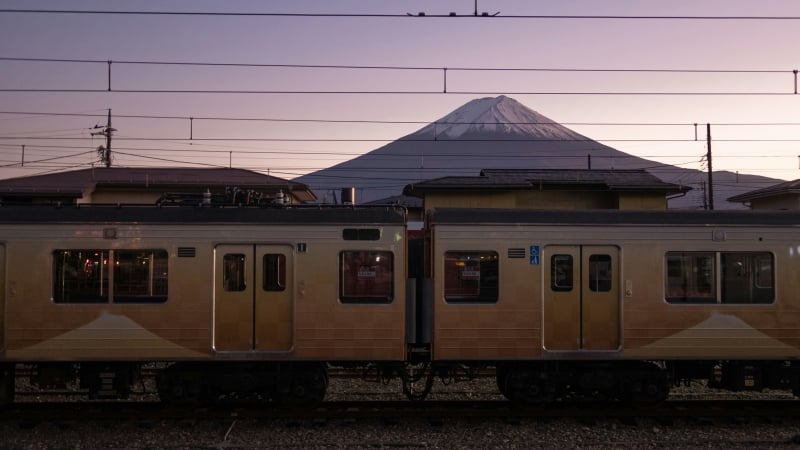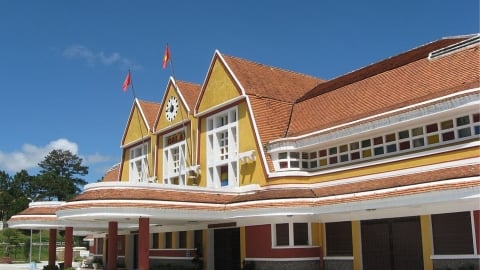Mount Fuji, the symbol of Japan, has long been an attractive destination for domestic and foreign tourists. However, in recent years, the influx of tourists here for the purpose of "virtual living" is causing many negative consequences, affecting the lives of local people and the image of this iconic mountain.
Vehicles parked haphazardly, pedestrians crossing the road illegally, and even standing in the middle of the road to take pictures cause traffic jams, endangering other road users. Garbage dumped by tourists surrounds Mount Fuji, destroying the natural beauty of this place. Tourists trample on grass, flowers, and even climb dangerous rocks to take pictures, causing damage to the surrounding environment.

Mount Fuji is a famous tourist symbol of Japan.
Therefore, Japanese authorities have built a fence to block the view of Mount Fuji to limit noise from tourists gathering in this area, affecting the lives of local people and as a measure to protect this landscape.
Tourists disregarding the danger and breaking the fence to take "virtual life" photos at Mount Fuji is an act of lack of awareness and should be condemned. Mount Fuji is a symbol of Japan and a famous tourist destination that attracts a large number of tourists. Many tourists want to get the best photos here so they ignore all the regulations. It was thought that after the fence was put in place, tourists coming here would not see the legendary virtual living corner and would give up the idea of checking in, but this place still welcomes a large number of tourists, causing holes in the fence to appear even though the police are always on duty from 10am to 4pm every day.

The check-in coordinates are so famous that this place is "overloaded" with tourists.

Many tourists risk their lives to come here just to take pictures with Mount Fuji.
There are tourists who, regardless of the danger, carry chairs and even ladders to climb higher than the black tarpaulin cover, conveniently for taking photos of the old virtual living angle. The act of tourists carrying chairs and ladders to climb higher than the tarpaulin cover, filming videos and renting ladders to take photos for a fee is a violation of local government regulations, showing disrespect for the efforts of local government and people to protect the landscape and environment.

To deal with "ugly" tourism, the government of this country has built barriers to prohibit acts that are not beautiful to the landscape.
The rapid spread of social media has made this behavior more and more widespread, many tourists come and follow the previous videos, spreading an "unsightly" culture. The fact that tourists jostle, push, and use bulky objects to take photos has damaged the beauty of the area and affected the experience of other tourists. Or climbing high to take photos can be dangerous for yourself and those around you, especially when using unsafe objects.

Many tourists even dare to punch holes in the fence to enjoy the view.
The wire fences are a last resort for town officials, after several softer measures were ignored by tourists. Officials are planning to add QR codes to the wire fences to showcase other “check-in” spots in the area. If the influx of tourists heading to the supermarket to take photos of Mt. Fuji slows down, the town may consider removing the nets.
Using a "black screen" to cover the famous "virtual life" photo area at Mount Fuji is only a temporary solution and cannot completely solve the problem of "virtual life" tourists and the consequences it causes. To move towards a long-term and sustainable solution, it is necessary to have the cooperation of many parties, including local authorities, tourists and other relevant parties.




































